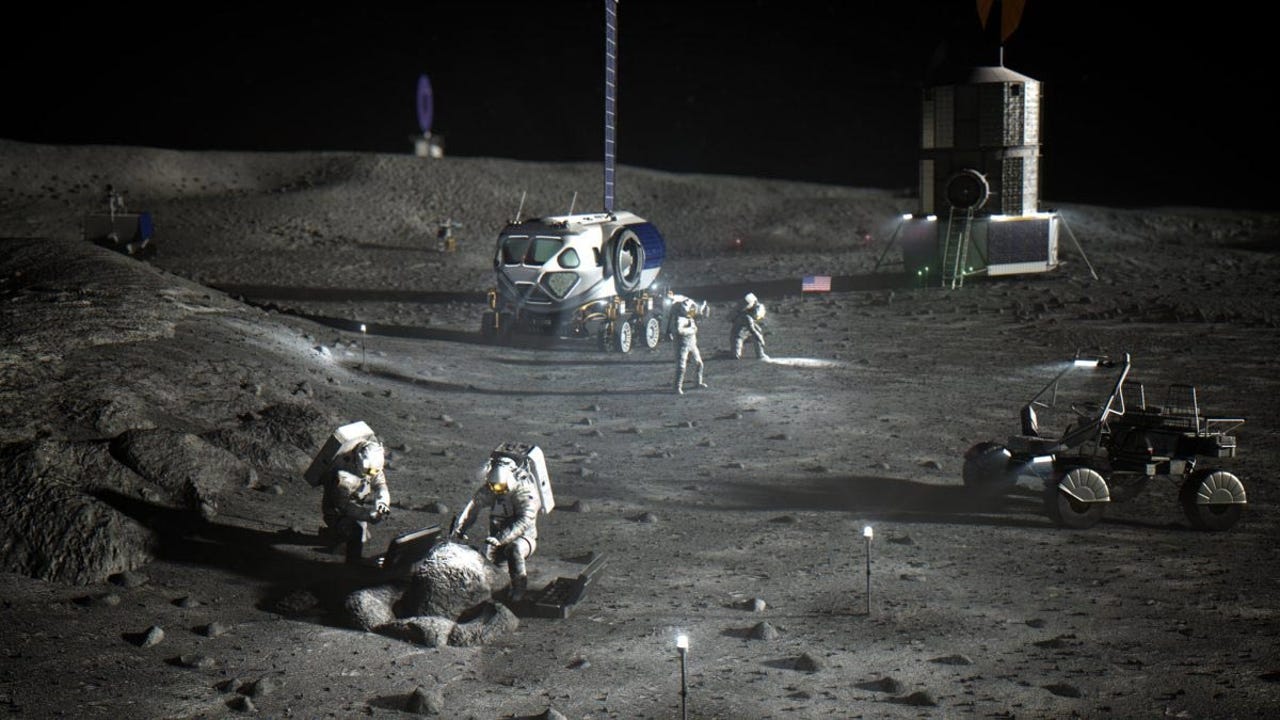Garage inventors wanted: NASA will pay you to help transmit power on the moon


Astronauts work on the moon in an artist rendering.
NASA wants to establish long-term human presence at the moon under its Artemis program. To do that, it will have to solve the tricky issue of power generation, transmission, and storage.
That's no easy task. Lunar night lasts 350 hours, rendering current solar schemes minimally effective. What NASA needs are lunar surface power systems that can deliver continuous, reliable power to support human habitation. And it needs help from savvy engineers and hobbyists to get there.
Enter the latest phase of an ongoing crowdsourcing competition that asks whether you've got the right stuff. In an era of massive development budgets and increasing technology convergence and sophistication, there's something charming about the U.S. space agency seeking bright ideas from unlikely sources in business, education, and the general public.
"Challenges like Watts on the Moon give us the chance to utilize the creativity of industry, academia, and the public to power our return to the Moon," said Jim Reuter, Associate Administrator for NASA's Space Technology Mission Directorate at NASA Headquarters in Washington. "I look forward to seeing how their solutions may also have important applications here on Earth and help advance similar technologies for terrestrial application and commercialization."
Back in late 2020, we wrote about the first phase of NASA's Watts on the Moon challenge, a crowdsourced competition in which participating teams received a specific mission scenario with three mission activities related to energy distribution, management, and storage. In 2021, seven winners were awarded a total of $500,000 in prize purses. These winners showed that there are a number of promising approaches to address NASA's needs, giving rise to Phase 2 and an opportunity to compete for $4.5 million in prize money.
The latest phase focuses on two key areas: power transmission and energy storage. NASA needs a way to transmit power from remote generation sources that can support heavy loads in extreme conditions (think frigid cold). Solutions in this area can include either wired or, increasingly intriguing, wireless energy transmission.
Coupled with the transmission problem, NASA needs energy storage that can stand up to the extreme cold of space and support habitation when energy generation is impossible.
This phase of the competition has three levels across which 17 prizes will be awarded. The competition is open to U.S. citizens or permanent residents of the United States who are 18 years of age or older. Organizations must be an entity incorporated in and maintaining a primary place of business in the United States.